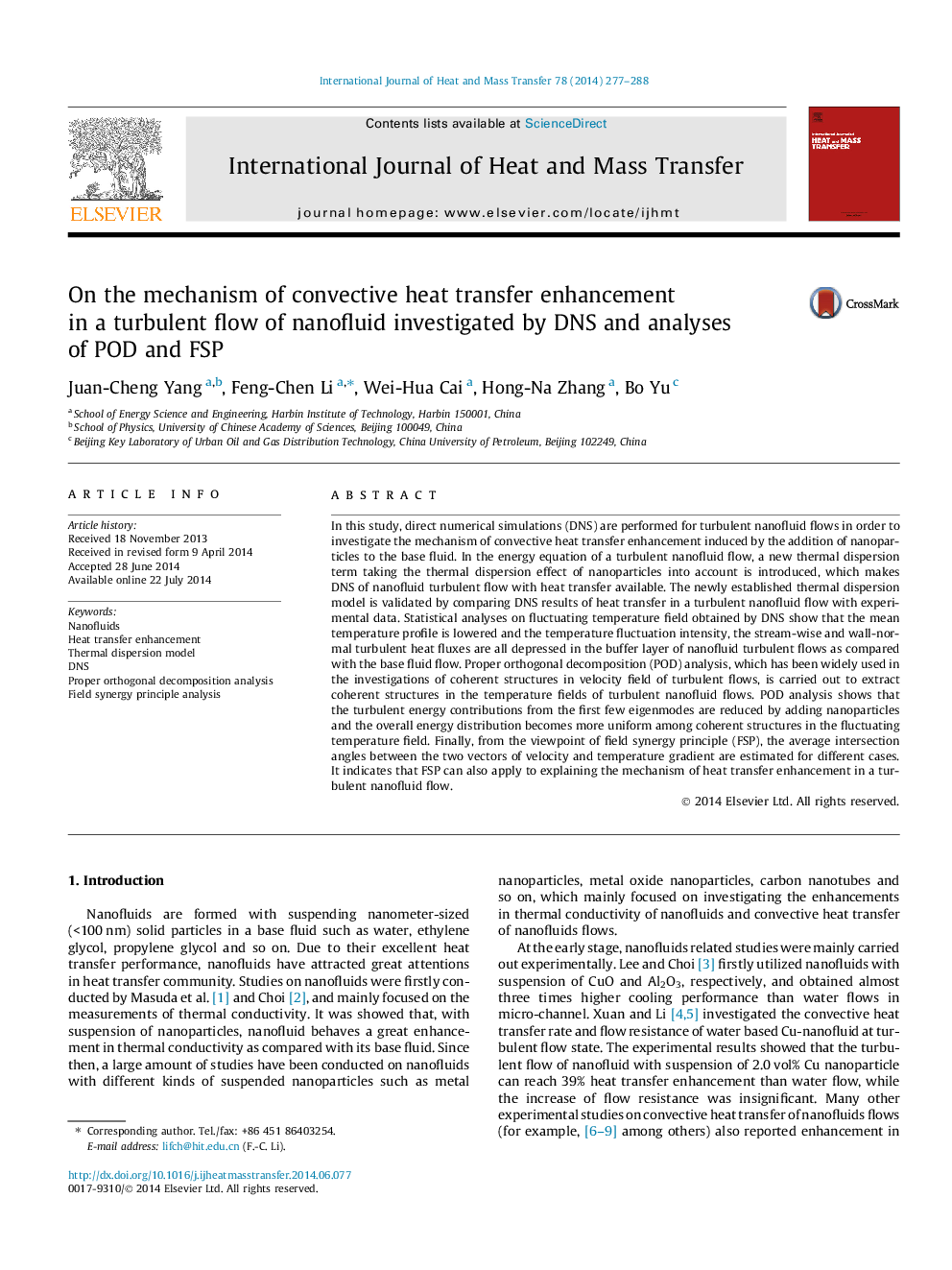| کد مقاله | کد نشریه | سال انتشار | مقاله انگلیسی | نسخه تمام متن |
|---|---|---|---|---|
| 657697 | 1458064 | 2014 | 12 صفحه PDF | دانلود رایگان |

In this study, direct numerical simulations (DNS) are performed for turbulent nanofluid flows in order to investigate the mechanism of convective heat transfer enhancement induced by the addition of nanoparticles to the base fluid. In the energy equation of a turbulent nanofluid flow, a new thermal dispersion term taking the thermal dispersion effect of nanoparticles into account is introduced, which makes DNS of nanofluid turbulent flow with heat transfer available. The newly established thermal dispersion model is validated by comparing DNS results of heat transfer in a turbulent nanofluid flow with experimental data. Statistical analyses on fluctuating temperature field obtained by DNS show that the mean temperature profile is lowered and the temperature fluctuation intensity, the stream-wise and wall-normal turbulent heat fluxes are all depressed in the buffer layer of nanofluid turbulent flows as compared with the base fluid flow. Proper orthogonal decomposition (POD) analysis, which has been widely used in the investigations of coherent structures in velocity field of turbulent flows, is carried out to extract coherent structures in the temperature fields of turbulent nanofluid flows. POD analysis shows that the turbulent energy contributions from the first few eigenmodes are reduced by adding nanoparticles and the overall energy distribution becomes more uniform among coherent structures in the fluctuating temperature field. Finally, from the viewpoint of field synergy principle (FSP), the average intersection angles between the two vectors of velocity and temperature gradient are estimated for different cases. It indicates that FSP can also apply to explaining the mechanism of heat transfer enhancement in a turbulent nanofluid flow.
Journal: International Journal of Heat and Mass Transfer - Volume 78, November 2014, Pages 277–288